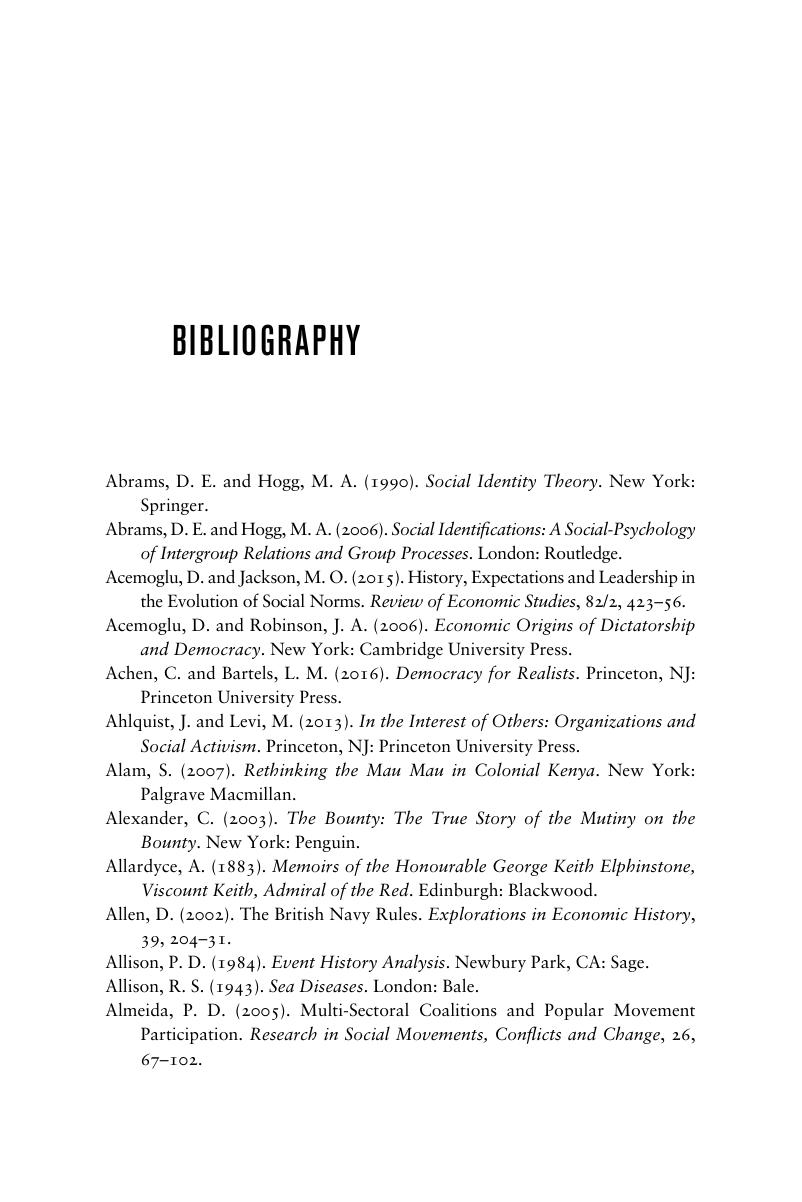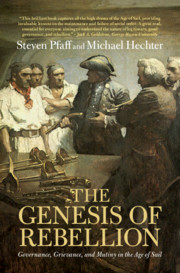Book contents
- The Genesis of Rebellion
- The Genesis of Rebellion
- Copyright page
- Dedication
- Contents
- Plates
- Figures
- Tables
- Preface
- Acknowledgments
- 1 The Genesis of Rebellion
- 2 Governance and Social Order in the Age of Sail
- 3 One and All
- 4 Why Seamen Rebelled
- 5 Insurgency and Solidarity
- 6 Discipline, Punishment and the Fear of Insurrection
- 7 The Consequences of Mutiny
- 8 Conclusion and Implications
- Appendix A Drawing the Sample and Archival Sources
- Appendix B Predicting the Odds of Mutiny
- Appendix C Estimating Time to Defection at the Nore Mutiny
- Appendix D Estimating the Frequency and Severity of Punishment in the Royal Navy
- Bibliography
- Index
- Plate Section
- References
Bibliography
Published online by Cambridge University Press: 17 June 2020
- The Genesis of Rebellion
- The Genesis of Rebellion
- Copyright page
- Dedication
- Contents
- Plates
- Figures
- Tables
- Preface
- Acknowledgments
- 1 The Genesis of Rebellion
- 2 Governance and Social Order in the Age of Sail
- 3 One and All
- 4 Why Seamen Rebelled
- 5 Insurgency and Solidarity
- 6 Discipline, Punishment and the Fear of Insurrection
- 7 The Consequences of Mutiny
- 8 Conclusion and Implications
- Appendix A Drawing the Sample and Archival Sources
- Appendix B Predicting the Odds of Mutiny
- Appendix C Estimating Time to Defection at the Nore Mutiny
- Appendix D Estimating the Frequency and Severity of Punishment in the Royal Navy
- Bibliography
- Index
- Plate Section
- References
Summary

- Type
- Chapter
- Information
- The Genesis of RebellionGovernance, Grievance, and Mutiny in the Age of Sail, pp. 296 - 320Publisher: Cambridge University PressPrint publication year: 2020



